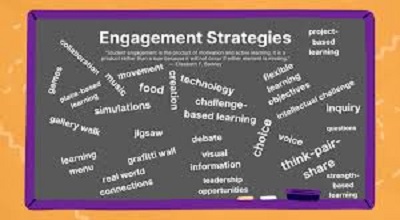Keep New Educators Engaged & Committed
Keep New Educators Engaged & Committed: The teaching profession is one of the most rewarding yet challenging careers, and retaining talented educators is crucial for student success. A well-structured onboarding process can significantly impact a new teacher’s decision to stay long-term. In this comprehensive guide, we’ll explore the latest strategies for onboarding new teachers effectively, ensuring they feel supported, valued, and motivated to thrive in their roles.
Whether you’re a school administrator, mentor, or HR professional, this guide will provide actionable insights to improve teacher retention and create a positive school culture.
Why Teacher Onboarding Matters
The Impact of Effective Onboarding
A strong onboarding process helps new teachers transition smoothly, reducing stress and increasing job satisfaction. Studies show that teachers who experience structured onboarding are:
- 50% more likely to remain in the profession after five years.
- More confident in classroom management and curriculum delivery.
Statistics on Teacher Retention
- Nearly 44% of new teachers leave the profession within five years due to lack of support.
- Schools with mentorship programs see up to 30% higher retention rates.
Pre-Boarding: Setting the Stage Before Day One
Clear Communication Before Hiring
- Send a welcome package with school policies, expectations, and resources.
- Provide access to digital platforms (email, LMS, HR portals) in advance.
Preparing Necessary Resources
- Ensure classrooms are ready with supplies, tech tools, and curriculum guides.
- Assign a mentor who can answer questions before the first day.
The First Week: Making a Strong First Impression
Orientation Sessions & School Culture Introduction
- Host interactive sessions on school values, mission, and community involvement.
- Introduce key staff members and support teams.
Assigning Mentors & Peer Support
- Pair new teachers with experienced mentors for guidance.
- Encourage collaboration through team-building activities.
Ongoing Support: Beyond the First Month
Professional Development Opportunities
- Offer workshops on classroom management, EdTech tools, and student engagement.
- Provide access to online courses and certification programs.
Regular Check-ins & Feedback
- Schedule monthly meetings to address concerns and track progress.
- Use anonymous surveys to gather honest feedback.
Creating a Positive School Culture
Fostering Collaboration & Inclusivity
- Encourage cross-departmental teamwork.
- Promote diversity and inclusion initiatives.
Recognizing & Rewarding Efforts
- Implement “Teacher of the Month” programs.
- Celebrate milestones and achievements publicly.
Leveraging Technology for Smooth Onboarding
Digital Tools for Teacher Success
- Use platforms like Google Classroom, Zoom, and Trello for seamless communication.
- Provide access to a digital resource library with lesson plans and training videos.
Virtual Training & Resource Libraries
- Offer on-demand training modules for flexible learning.
- Create a FAQ hub for quick problem-solving.
Measuring Onboarding Success
Key Performance Indicators (KPIs)
- Teacher retention rates after one year.
- Job satisfaction survey scores.
Surveys & Feedback Loops
- Conduct exit interviews for departing teachers to identify gaps.
- Adjust onboarding strategies based on feedback.
Common Mistakes to Avoid in Teacher Onboarding
Lack of Structured Training
- Avoid overwhelming new teachers with unstructured information.
- Provide step-by-step guides and checklists.
Overwhelming New Teachers
- Space out training sessions instead of front-loading information.
- Encourage a balance between learning and hands-on experience.
FAQs About Teacher Onboarding
1. How long should the teacher onboarding process last?
Ideally, onboarding should span 3-6 months, with continuous support throughout the first year.
2. What’s the role of a mentor in teacher onboarding?
A mentor provides guidance, answers questions, and helps new teachers navigate school policies and classroom challenges.
3. How can schools make onboarding more engaging?
Use interactive workshops, gamified training modules, and peer collaboration activities.
4. What are the signs of a poor onboarding process?
High turnover rates, low teacher morale, and frequent complaints about lack of support indicate ineffective onboarding.
5. Can technology replace in-person onboarding?
While tech enhances efficiency, a blended approach (in-person + digital) works best for relationship-building.
Conclusion
Effective teacher onboarding is not just about paperwork—it’s about creating a supportive environment where educators feel valued and empowered. By implementing these strategies, schools can reduce turnover, boost morale, and improve student outcomes.
